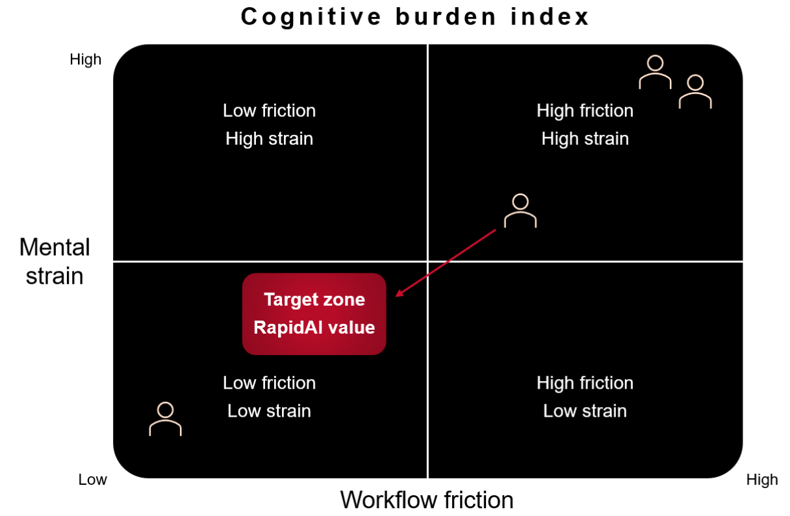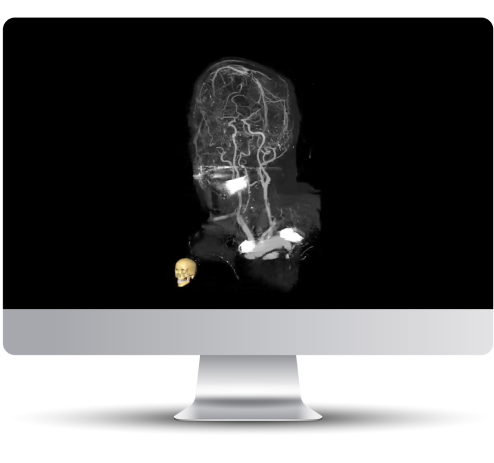Good cerebral collateral circulation is associated with favorable functional outcomes following EVT. Can a comprehensive cerebral collateral cascade (CCC) analysis help predict clinical and radiological outcomes in patients treated with EVT?
A study by Dr. Tobias Djamsched Faizy and co-authors, published in Neurology, used multiparametric CT imaging to assess the CCC of LVO patients that underwent thrombectomy.
This retrospective, multicenter, cohort study included large vessel occlusion patients treated with thrombectomy at two comprehensive hospitals, University Medical Center, Hamburg-Eppendorf, Germany, and Standard University Hospital, between January 2013 and December 2019.
Key takeaways:
- A favorable CCC profile can predict good functional outcomes in large vessel occlusion patients undergoing thrombectomy.
- Patients with favorable CCC profiles had considerably lower final infarct volumes.
Imaging analysis
The perfusion images were analyzed with Rapid CTP.
Ischemic core was defined as tissue volume with at least 70% reduced cerebral blood flow relative to the healthy contralateral hemisphere.
The Alberta Stroke Program Early CT Score (ASPECTS) was determined on pre-treatment head non-contrast CT scans.
Study groups and key findings
There were 176 patients with a favorable CCC profile, 126 with an unfavorable CCC profile, and 345 with mixed CCC profiles.
Favorable CCC (CCC+) profile: robust pial arterial collaterals (Tan ≥50%), tissue-level collaterals (Hypoperfusion Intensity Ratio ≤0.4), and venous outflow (cortical vein opacification score 3-6).
Unfavorable CCC (CCC-) profile: poor pial arterial collaterals (Tan < 50%), tissue-level collaterals (Hypoperfusion Intensity Ratio >0.4), and venous outflow (cortical vein opacification score 0-2).
CCCmixed profiles included all patients who did not fulfill the criteria of the CCC+ or CCC- group.
Cerebral collateral cascade analysis
- A modified Tan scale was used to assess the pial arterial collaterals on CT angiography.
- Hypoperfusion Intensity Ratio was used to determine the tissue-level collaterals.
- The degree of contrast opacification was used to determine the venous outflow profiles.
CCC+ patients had more favorable functional outcomes after 90 days (median mRS 1) compared to CCCmixed (median mRS 4) and CCC- (median mRS 5; p<0.001).
CCCmixed patients had better functional outcomes compared to CCC- patients (p = 0.014).
Comprehensive assessment of the collateral blood flow cascade can help predict the clinical outcomes of thrombectomy treatment in LVO patients.
Rapid CTP is the only FDA-cleared software to aid patient selection for acute stroke therapy.


